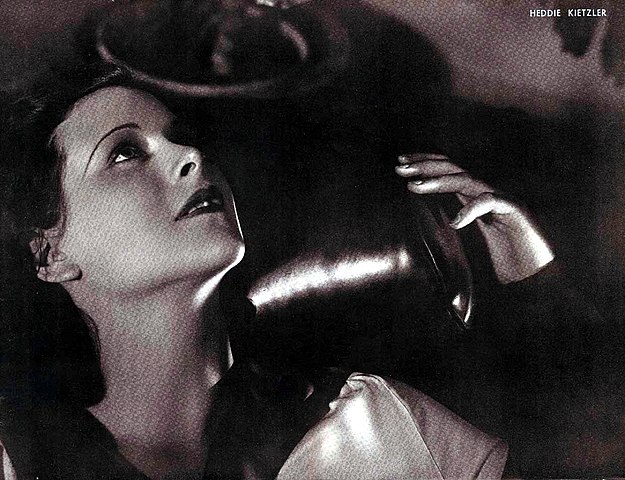Ecstasy (Extáze) (1933), a Czech film directed by Gustav Machatý and starring the then-unknown actress Hedy Lamarr (under her real name, Hedwig Keisler), was the first film to be blocked by the U.S. Customs Service from entering the United States, thus continuing the service’s earlier censorship of books and magazines in violation of the modern conception of the First Amendment and the presumption against prior restraints on expression.
Ecstasy was first filmed blocked from entering the United States for being obscene
In a simple story of an unhappy marriage the film showed Lamarr in the nude while racing across a meadow and swimming. Another scene, revolutionary for its time, showed a simulated female orgasm, although only Lamarr’s face was shown.
In 1935 Ecstasy’s American distributor, Samuel Cummins of Eureka Productions, attempted to import the film, but the U.S. Customs Service banned it as obscene and immoral. He appealed the ruling but found he had no physical evidence to offer the appeals court because Customs agents had burned the print.
Edited film was allowed into the country although it was banned in some states
A year later, Cummins returned with a significantly re-edited print, and Customs allowed it into the United States. For major distribution, however, the film still needed a seal of approval from the Motion Picture Producers and Distributors of America (MPPDA); without it, it could play only in a handful of art houses.
Some states and localities banned the film altogether, including New York state. Cummins’s company sought a court order that would force New York officials to show the film. However, in Eureka Productions v. Lehman (S.D.N.Y. 1936), a federal district court ruled that state officials could exercise their police powers and deny a permit for the showing of a film they believed obscene.
Cummins had little success in state court, either. A state court reached a similar ruling in Eureka Productions v. Byrne (N.Y.S. 1937), finding that state officials did not have to issue a permit, in part because the film “unduly emphasizes the carnal side of the sex relationship.”
The film also had problems in other states. In June 1937, a judge in Nebraska ruled that the film violated the decency laws of the state.
Film was eventually granted a seal of approval for major distribution
Nevertheless, Ecstasy’s success in limited release persuaded Cummins to again request MPPDA approval in order to book it into larger theaters. MPPDA’s refusal to approve the film led to a highly public battle, and such national magazines as Look ran articles on the censorship battle, ironically featuring the very nude photos of Lamarr that were at the heart of the controversy.
In 1940, after more than a dozen court battles, and significant cuts to the most controversial scenes, Ecstasy was at last granted a seal of approval.
This article was originally published in 2009. Douglas C. Dow, Ph.D., is a professor at the University of Texas at Dallas specializing in political theory, public law, legal theory and history, and American politics.

